Hello readers! As I am beginning my journey of becoming an educator, I am experiencing many ‘firsts’, one of which is my development of a Personal Learning Network on this wonderful social media outlet known as Twitter! Throughout the process of starting to build my network through following other educators, participating in Twitter chats, and commenting and responding to other pre-service and service educators I am really getting to know the good, bad, and even ugly of Twitter.
Before I go into my personal thoughts about using Twitter as an educator, I will share a few videos below that you can check out about this topic so that you can familiarize yourself with it if you are not!
What are my thoughts?
In my opinion, Twitter is an AMAZING platform for educators and future educators to learn on. This is because you can make so many connections with educators with different backgrounds and experiences that may have taught them to look at things differently than you. This is helpful when you feel lost or unsure of what to do in certain situations. Twitter allows educators to help one another in times of need and give ideas.
Having Twitter allows an alternate form of instant communication in which the sharing of information and ideas is nearly seamless. It allows teachers to ask a question and instantly receive a response. Twitter also has such a great bank of resources posted by education leaders and information gurus such as videos, articles, blogs, and programs that you can make use of.
Being that it is a social media outlet, Twitter also is versatile in that it can be accessed on a computer, tablet, or phone. This allows for even greater access to the wealth of information.
How have social media space conversations affected the way I think about learning?
Through Twitter conversations, I have spoken with educators across the world. We have talked about different subjects such as motivating students, being authentic in the classroom, the importance of social-emotional learning, the list goes on and on.
Here are some snapshots of conversations I’ve had with other educators.
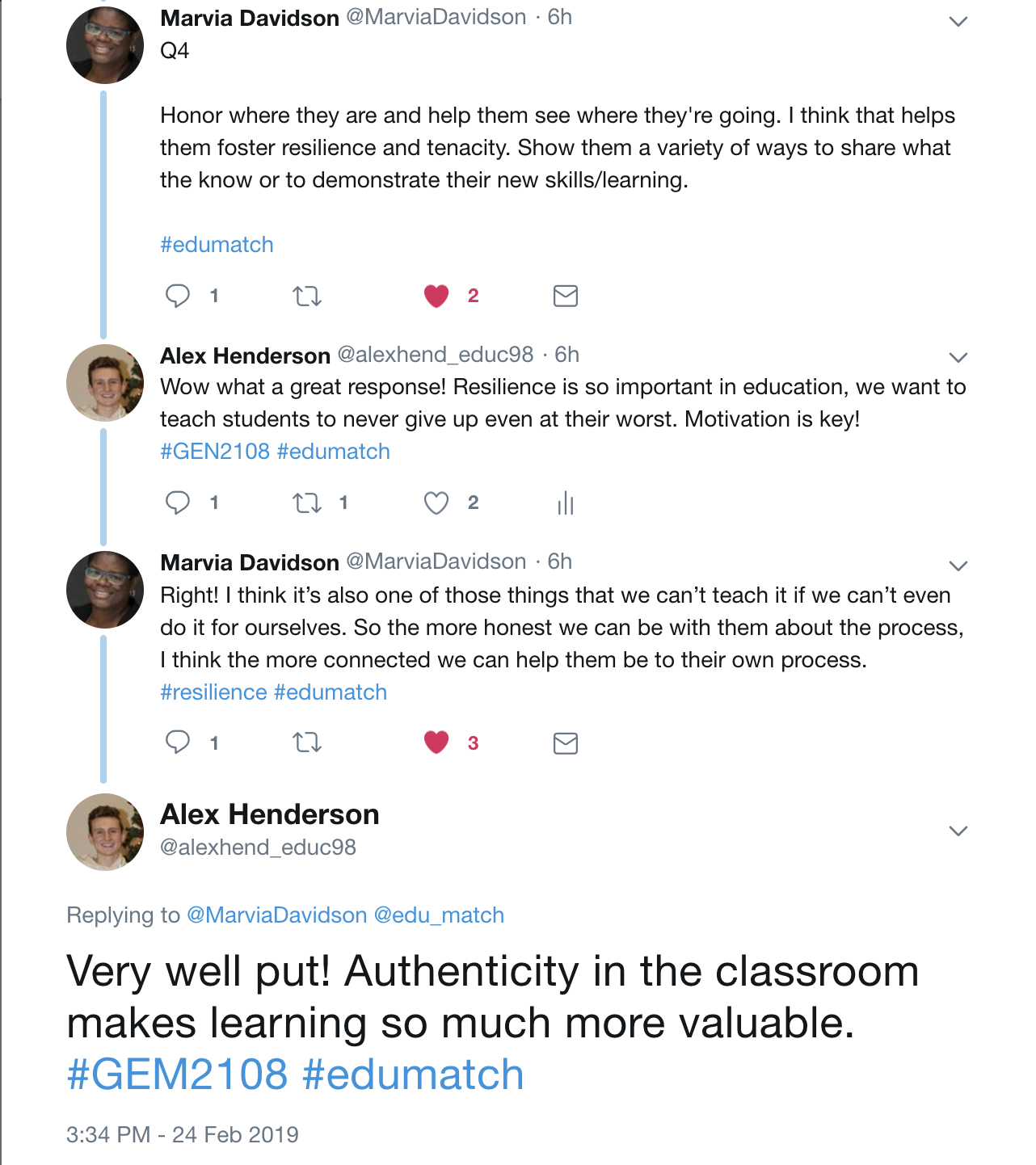
In this post, I speak with Marvia Davidson @MarviaDavidson about how important it is to foster resilience in our students through authentic motivation!
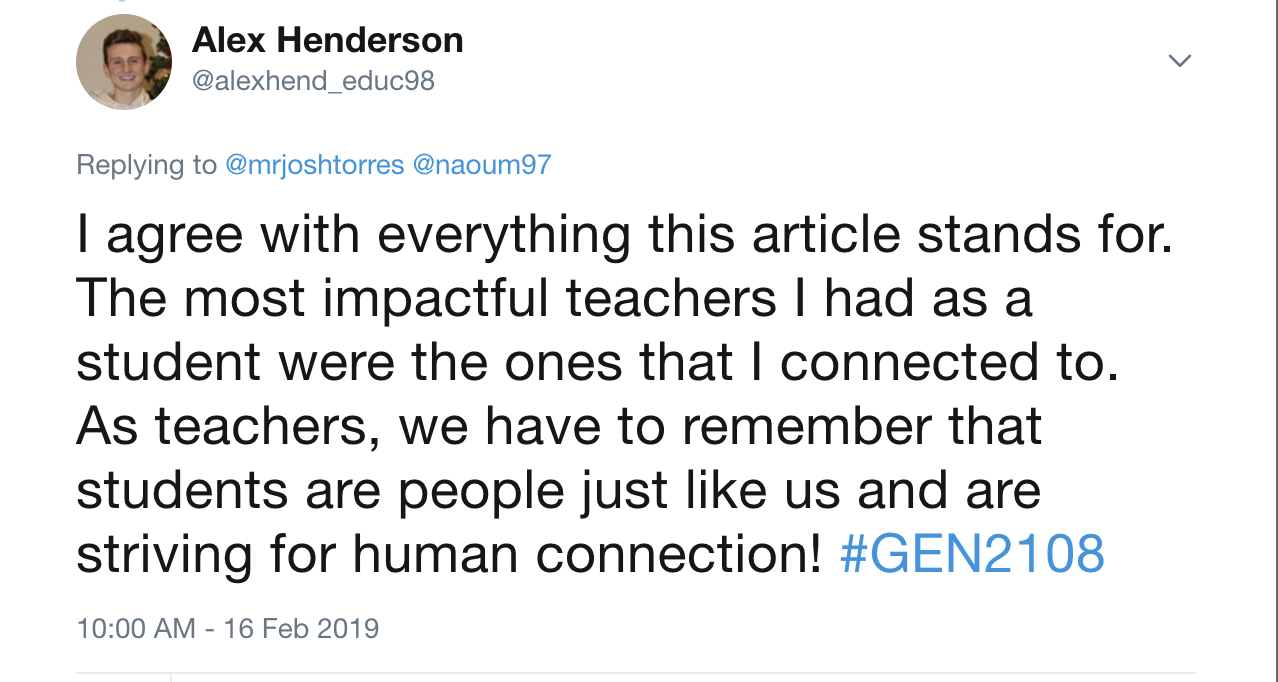
In this tweet, I am responding to an article a classmate shared and how important it is to connect with our students
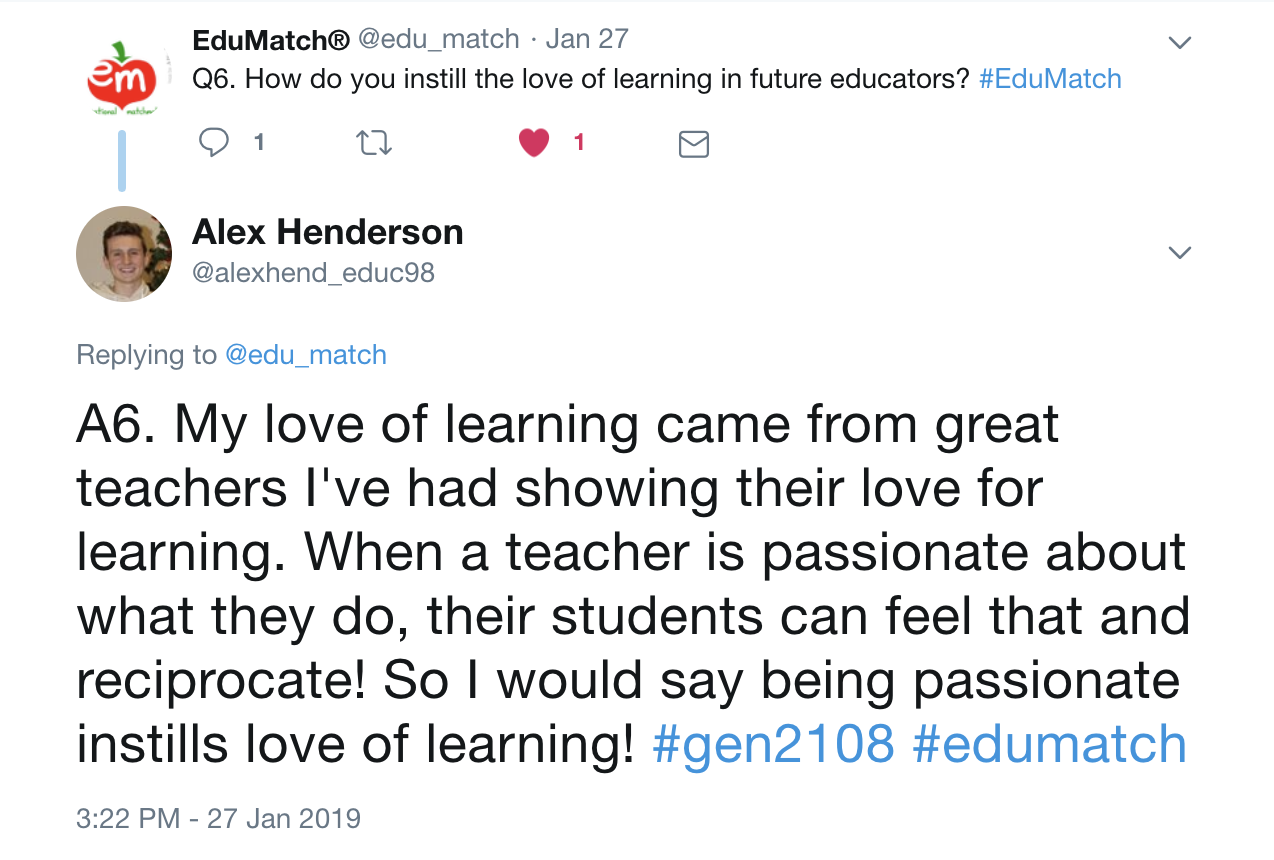
In this photo, I am responding to the #edumatch Twitter chat about how we bestow a love of learning in our future educators but also students in general
Not only have I greatened my teaching philosophy by participating in educational chats and responses, but I have also gained knowledge of specific practices and strategies to be used within the classroom. For example, after reading an article shared by a fellow classmate, I learned about the TAG response strategy that requires students to ask questions of their peers work and give constructive and kind responses. I also have learned about the importance of a morning meeting routine in the classroom and how it can increase student’s moral and feeling of belongingness in the classroom which are two very important things!
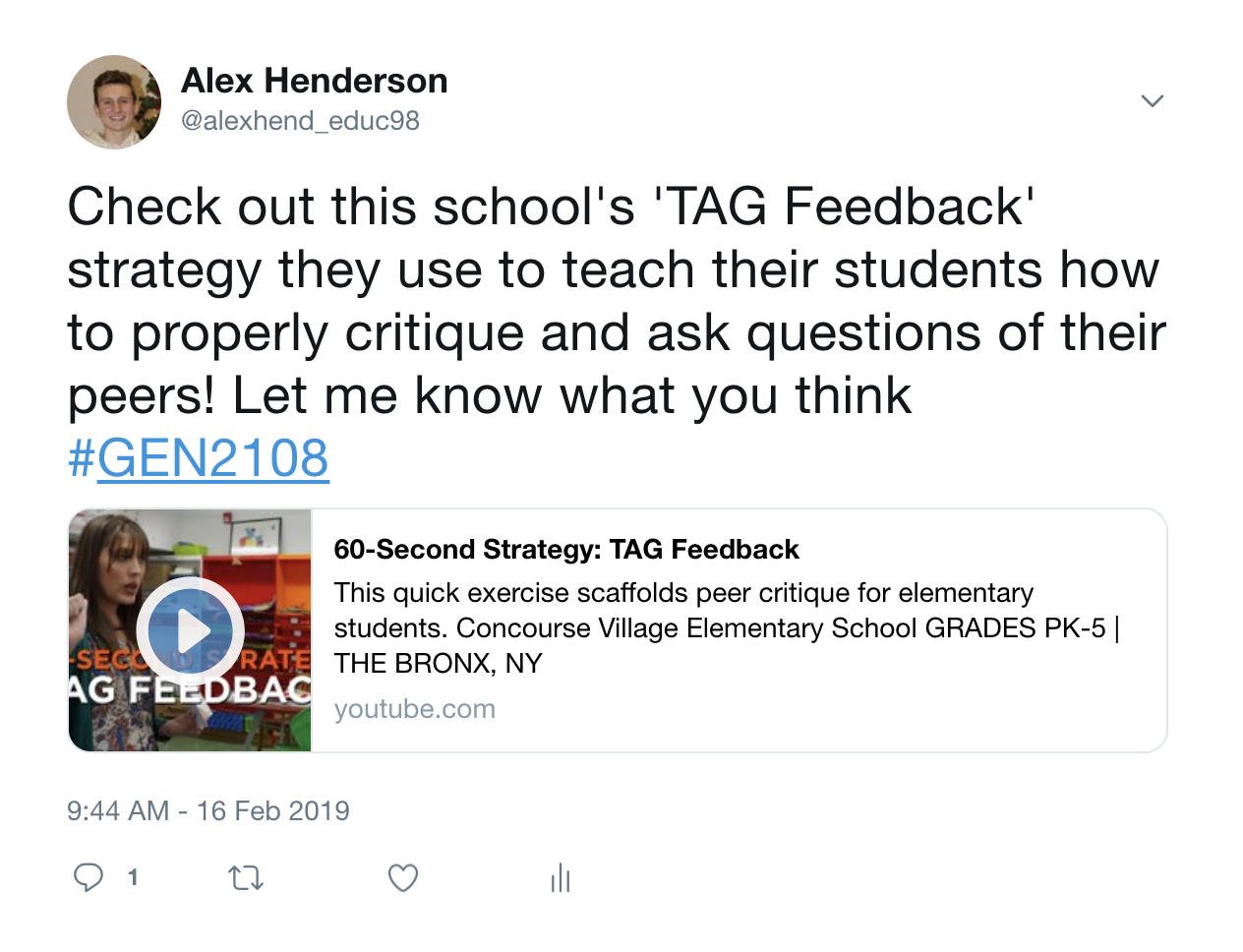
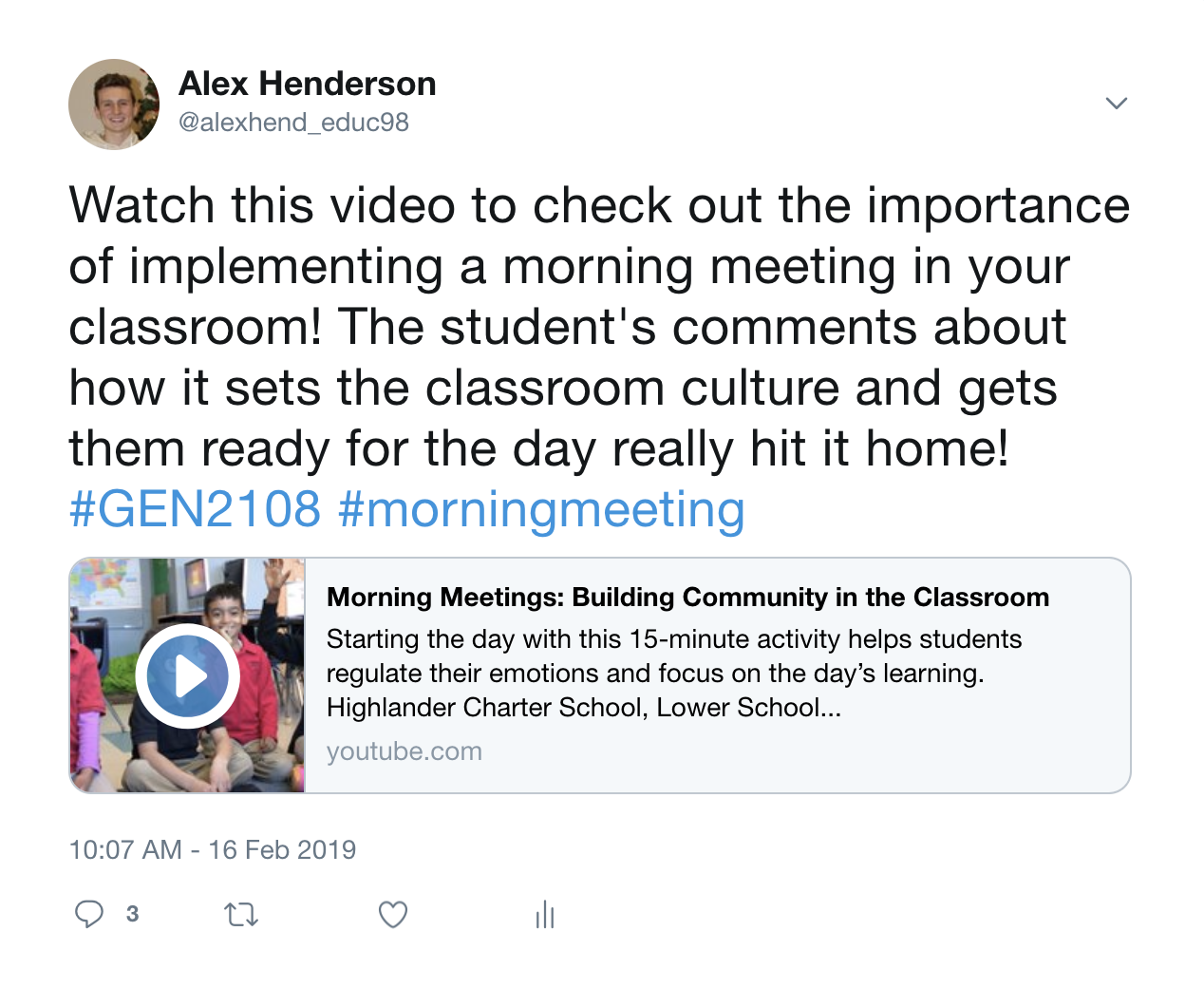
There has to be something you don’t like?
I can honestly say, after only a few weeks of using Twitter as a PLN, I have no complaints. I am not an expert in social media outlets and cannot say for sure that Twitter is flawless, however, I can say that Twitter has so many benefits for current and future educators so I highly recommend!
So after reading this what are your thoughts on Twitter as an outlet for educators? Comment down below
Thank you for reading my blog and join me on my journey in becoming an educator by following me on my twitter @alexhend_educ98!

